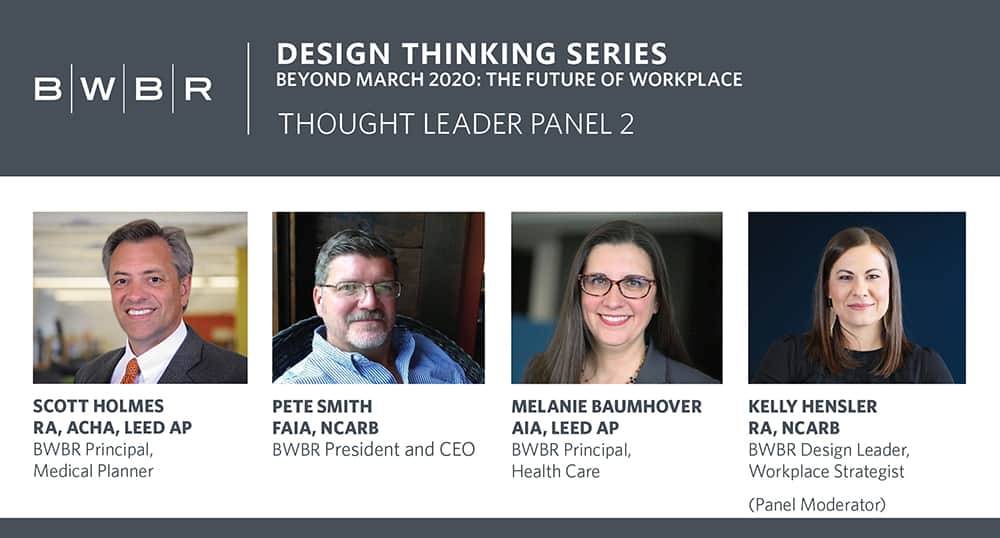For most organizations, the COVID-19 pandemic’s rapid spread had a whiplash effect on business operations. Overnight, processes and procedures were upended, leaving many managers and facility operators in a perpetual crisis mode of reacting, adjusting, planning, and reacting again as knowledge and models changed on a daily basis.
Rightly so, many have been focused on the here-and-now, trying to sustain operations while ensuring staff and customers are safe and served during a time of many unknowns. While the idea of lessons learned is not lost on organizations, the idea of trying to find those lessons now in the midst of this massive disruption is far from immediate consideration.
Parallels have been drawn between the pandemic and war – in-the-moment decision-making; dealing with known knowns; managing through the unknowns; and allocating resources based on both best available information and predictive modeling outlining scenarios.
Continuing that same comparison, key to many operational gains and lessons learned is the after-action review. Also known as post-mortem events, the reviews on events (good, bad, indifferent) bring leaders and managers together to gain insights on what is working, successes to retain, and items to mitigate or change. However, unlike the name suggests, the best timing for such evaluations is not left until after the crisis is past but in the midst of the campaign when opportunities in gains made and lessons learned can have the greatest impact to reward organizations for the future.
THE FUTURE URGENCY
The biggest misconception about these after-action reviews is that it is about a report driven by a meeting. To the contrary, rather than being an end-product, these reviews are living processes, bringing together various managers and leaders to learn in the moment with a focus on applying such learnings to immediate and future events.
Resilience and adaptability are two of the biggest drivers for these reviews. Take, for example, Rush Medical Center in Chicago, which was recently featured for its planning coming out of the September 11 attacks. A mass casualty event, the hospital evaluated its resources across the spectrum, from emergency to inpatient care and facility capacity. In 2012, it created a new patient tower with surge capacity. In 2020, it was positioned to respond as optimally as possible to the COVID-19 pandemic.
Action reviews provide a multi-faceted organization the ability to pull together leaders and managers from across departments and teams to capture information in the moment that can help groups pivot immediate resources or leverage the information to better allocate capital in future plans. Unlike incident reports or event reviews which tend to focus on where processes or communications broke down and where accountability can be assigned (read “blame”), these reviews flatten the organizational structure and bridge the departmental silos to evaluate the good, the bad, and the ugly of an event, small or global in nature, with a future focus that builds accountability up (read “enable”).
Continual assessment is key to the success of these reviews, so that the successful and not-so-successful lessons can be applied in real time and also not be lost to time, transitions, or further crises.
ELEMENTS FOR AFTER-ACTION REVIEWS
When executed successfully, in addition to building organizational resiliency and adaptability to pivot and respond to market demands, a company also builds trust by creating a communications mechanism where transparency between divisions creates a unified understanding of where the whole is going.
Well planned and executed facilitation is key to creating a review atmosphere where people feel empowered and comfortable to share learnings and ideas. Ideally, a neutral third party with experience in facilitation would help lead the discussion since they can engage without preconceptions in the conversation and provide an objective perspective to guiding such discussions. Although not ideal, it is possible to use a participating team member as a facilitator; the caveat is that organizations would need to ensure the internal facilitator can also provide their input while leading the review.
With a facilitator identified, other elements needed for a successful review:
- An agenda: While the conversation needs to be open and honest, the discussion should also be structured and managed with clear objectives. An agenda allows participants to understand the objective of the meeting while also visualizing what outcomes to expect. The agenda also creates an allotted time to have free discussion.
- Space to talk freely: This is both physical and visceral, providing the appropriate area to accommodate the team and creating the atmosphere for frank discussions.
- Scribe: Documenting the discussion is key to sharing the learnings.
- Food: Feed the people. It works to both give energy to the discussion and create a more casual atmosphere for an open and honest talk.
- Survey: With preplanning for such discussions a survey sent in advance can help provoke thoughts coming into the event.
Coming out of these meetings will be assignments. They need to be clearly established, identifying who will do what by when. Conduct follow up touch points to ensure actions are being addressed and completed.
ASKING THE RIGHT QUESTIONS
Discovering innovations or finding processes to execute operations in ways that haven’t been done in the past are some of the outcomes of a successful traditional after-action review. Telehealth is a great example: as CMS changed regulations on reimbursements for telemedicine and expanded uses of technologies, organizations quickly pivoted to providing more telehealth services. In the midst of the pivot, these organizations continue to evaluate and adjust according to what they are learning about telehealth delivery.
As organizations take on these reviews in real time, in addition to putting the right elements in place, it is important to think about the questions they are asking to mine the right learnings. Best practice is to start with good:
- What is working? Why?
- Who makes it work (individuals, groups, departments, suppliers, vendors)?
- What is replicable?
- Are we able to spread successes?
- What are we doing that’s innovative? Should we keep doing it and/or can it become a new standard work?
- What are we doing that we never thought we would or could do? Should we keep doing it?
Each of these questions along with many more will come as conversations are had and answers to the “whys” unfold. This is also a great time to recognize and reward individuals and teams for the work they did and are doing right now rather than waiting until the end for recognition. Morale will be the workhorse behind success and surviving.
Obviously, in honest discussion, exploring what didn’t work is also important:
- What is not going well? Why?
- More importantly, why isn’t it working and what could/should be done differently if we feel it is the right thing?
- What do we wish we hadn’t done? Why?
- What should/would we do differently? How?
- What existing systems or processes are failing?
- Who are we forgetting to include?
The not good category of questions can be the most challenging. Feeling of failure is one of the first emotions individuals will experience. It is most critical this is addressed up front. However, the greatest lessons learned, and opportunities gained will come out of these questions. This is a better time than any to recognize and reward those willing to have the harder conversations, an approach appreciated by strong leaders.
There are opportunities to gain insights on what worked, successes to retain, and items to mitigate or change the next time something similar occurs. They aren’t waiting on a linear timeline to seize. As an incident command center can provide organizations a mechanism in which to manage various parts of an organization responding in real-time, such after-action reviews gives organizations a mechanism to evaluate how well their resources are deployed and if those deployments are achieving the outcomes planned or desired, or even if those outcomes were the ones that should have been pursued.
COVID-19 will provide many lessons for organizations. With the rapid pace of change that the pandemic has brought, and a future that is far different now than it was a few months ago, organizations can’t wait for the case study to be published to learn from this moment. Executing elements of a traditional after-action review now gives organizations the best ability to control what their future will look like coming out of our current disruption.
David Voller, MBA, senior operational planner, is an experienced facilitator and operations leader with a demonstrated history of producing revenue, reducing operating costs, implementing new systems, developing strategic goals and building cultures for change through redesigning operations. Prior to BWBR, David had more than 20 years of work at hospitals and health systems, including Mayo Clinic and Gillette Children’s Specialty Healthcare. David can be reached at dvoller@bwbr.com or 651.290.1909.



